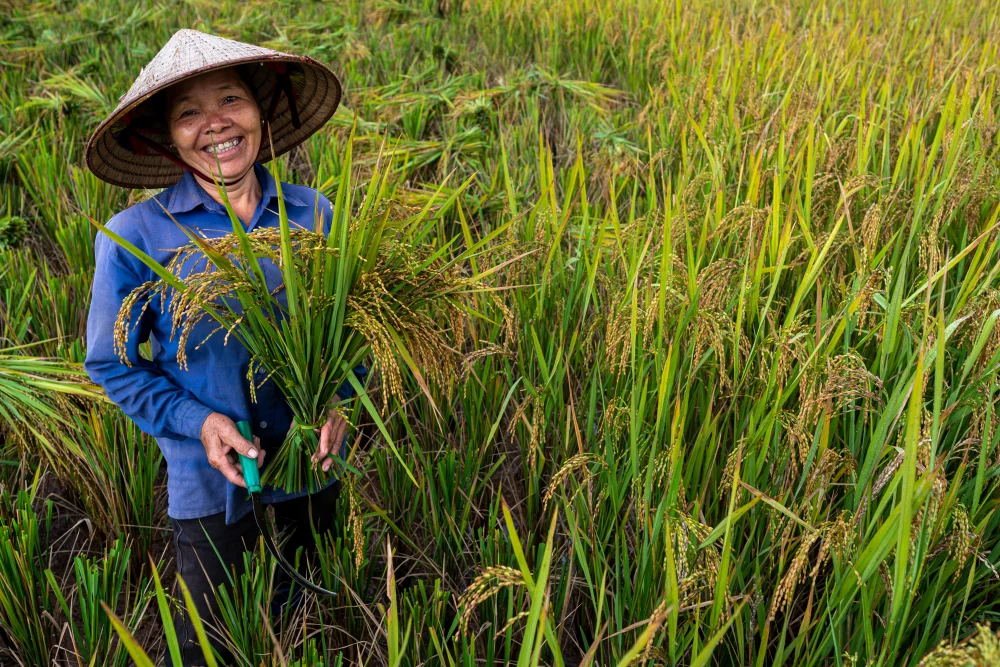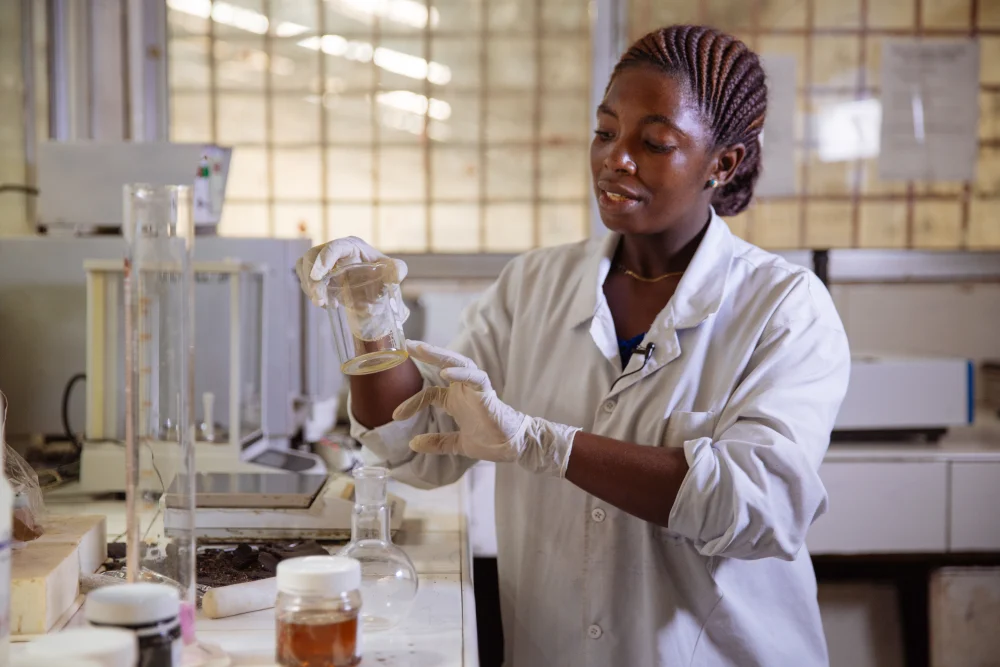Welcome to CGSpace
Identify, locate and download research and other outputs produced across CGIAR and its partners.
Content is organized in communities and collections and includes outputs from CGIAR’s current research and innovation portfolio, outputs of CGIAR research centers and hosted content of other organizations and programs. Read more about the content we hold.
Our Research Collections
Research Themes
Recent Submissions
Making agricultural supply chains deliver better for women test
(Journal Article, 2025-04-10) Joya, Fernanda Soto; Shijagurumayum, Meghajit Sharma; Wiegel, Jennifer Rebecca; Elias, Marlene; González, Silvia; Rodríguez-Fabilena, René; Licona, Andrea; Sánchez, Liliana; Rodríguez, Ivan; Sosa, Ítalo
test handle 1
(Journal Article, 2019-11-12) Millner, Naomi; Peñagaricano, Irune; Fernandez, Maria; Snook, Laura K.
Closing yield gap for sustainable food security in Sub-Saharan Africa – progress, challenges, and opportunities
(Journal Article, 2025-05) Ongoma, V.; Brouziyne, Youssef; Bouras, E. H.; Chehbouni, A.
Sub-Saharan Africa (SSA) remains food insecure despite having a climatic and biophysical potential to grow the crops to meet its growing food demand. Closing yield gap presents an opportunity to increase agricultural productivity in SSA for food security and economic stability in line with SDG 2 and 1. This work looks into the three main drivers of yield gap in SSA: water, fertilizer, and management practices, pointing out the challenges and opportunities for closing the gap. Rainwater is a good source of water, especially in tropical areas, and there is a need for its harvesting and conservation. Fertilizer use is still low (~20 kg/ha), and has to be increased while managing fertilizer nutrients effectively supported by locally developed computer-based decision support systems, for high crop yields. Latest commitments by African Union to increase local production, and supply, and reduce fertilizer costs is commendable. Adopting new crop varieties that are adapted to local conditions and resistant to drought and diseases, as well as improving good management practices backed by extension services are essential to maximizing crop yield and strengthening resilience in the face of environmental challenges. This calls for good leadership, backed up with good policies and political goodwill.
The impact of expanding eucalyptus plantations on the hydrology of a humid highland watershed in Ethiopia
(Journal Article, 2025-05) Fenta, H. M.; Steenhuis, T. S.; Negatu, T. A.; Zimale, F. A.; Cornelis, W.; Tilahun, Seifu A.
Changes in climate and land use significantly impact downstream water availability. Quantifying these effects in the Ethiopian Highlands is crucial, as 85% of the transboundary water in Egypt and Sudan originates from these highlands. While the impact of climate change on water availability has been widely studied, few experimental studies have examined how it is affected by eucalyptus reforestation. Therefore, the objective was to investigate how eucalyptus expansion impairs water availability in the Ethiopian Highlands. The study was conducted in the 39 km2 Amen watershed, located in the upper reaches of the Blue Nile. Rainfall data were collected from local agencies from 1990 to 2024, while streamflow data were available only for 2002–2009 and 2015–2018. Actual evapotranspiration was obtained using the WaPOR portal, and land use was derived from Landsat 5 TM and Landsat 8 OLI. The satellite images showed that the eucalyptus acreage increased from 238 ha in 2001 to 799 ha in 2024, or 24 ha y−1 . The actual evapotranspiration of eucalyptus was up to 30% greater than that of other land uses during the dry monsoon phase (January to March), resulting in decreased water storage in the watershed over a 23-year period. Since runoff is generated by saturation excess runoff, it takes longer for the valley bottoms to become saturated. In the 2002–2009 period, it took an average of around 160 mm of cumulative effective rain for significant runoff to start, and from 2015 to 2018, 274 mm was needed. Additionally, base flow decreased significantly. The annual runoff trended upward when the annual rainfall was more than the additional amount of water evaporated by eucalyptus, but decreased otherwise.
The genetic structure and diversity of smallholder dairy cattle in Rwanda
(Journal Article, 2025-05-27) Opoola, O.; Shumbusho, F.; Rwamuhizi, I.; Houaga, I.; Harvey, D.; Hambrook, D.; Watson, K.; Chagunda, M.G.G.; Mrode, Raphael A.; Djikeng, Appolinaire
Previous genomic characterisation of Rwanda dairy cattle predominantly focused on the One Cow per Poor Family (locally called “Girinka”) programme. However, smallholder farmers in Rwanda have benefited from other livestock initiatives and development programmes. Capturing and documenting the genetic diversity, is critical in part as a key contribution to genomic resource required to support dairy development in Rwanda. A total of 2,229 crossbred animals located in all dairy-producing regions of Rwanda were sampled. For each animal, a hair sample was collected and genotyped by using the Geneseek Genomic Profiler (GGP, Neogen Geneseek®) Bovine 50 K (n = 1,917) and GGP Bovine 100 K arrays (n = 312). The combined dataset was subject to quality control, data curation for use in population genetics and genomic analyses. To assess the genetic structure and diversity of the current population, key analyses for population structure were applied: Principal Component Analysis (PCA), population structure and diversity, admixture analysis, measures of heterozygosity, runs of homozygosity (ROH) and minor allelic frequency (MAF). A dataset of global dairy population of European taurine, African indicus and African taurus (n = 250) was used as reference. Results showed that Rwanda cattle population is highly admixed of diverse pure and crossbred animals with average MAF of 33% (standard error; se = 0.001) with proportion of foreign high yielding (taurine) dairy breeds of Jersey Island (18%); 12% non-Island Jersey and 42% Holstein-Friesian ancestries. Two African Bos taurus and five Bos indicus breeds contributed 28% of their genetics. Genetic distances were highest in Gir and N’dama (0.29); and Nelore and N’dama (0.29). There were 1,331 ROH regions and average heterozygosity were high for Rwanda cattle (0.41 se = 0.001). Asides well-established genes in cattle, we found evidence for a variety of novel and less-known genes under selection to be associated with fertility, milk production, innate immunity and environmental adaptation. This observed diversity offers opportunity to decipher the presence and/or lack of genetic variations to initiate short- and long-term breed improvement programmes for adaptation traits, disease resistance, heat tolerance, productivity and profitability of smallholder dairy systems in Rwanda.



